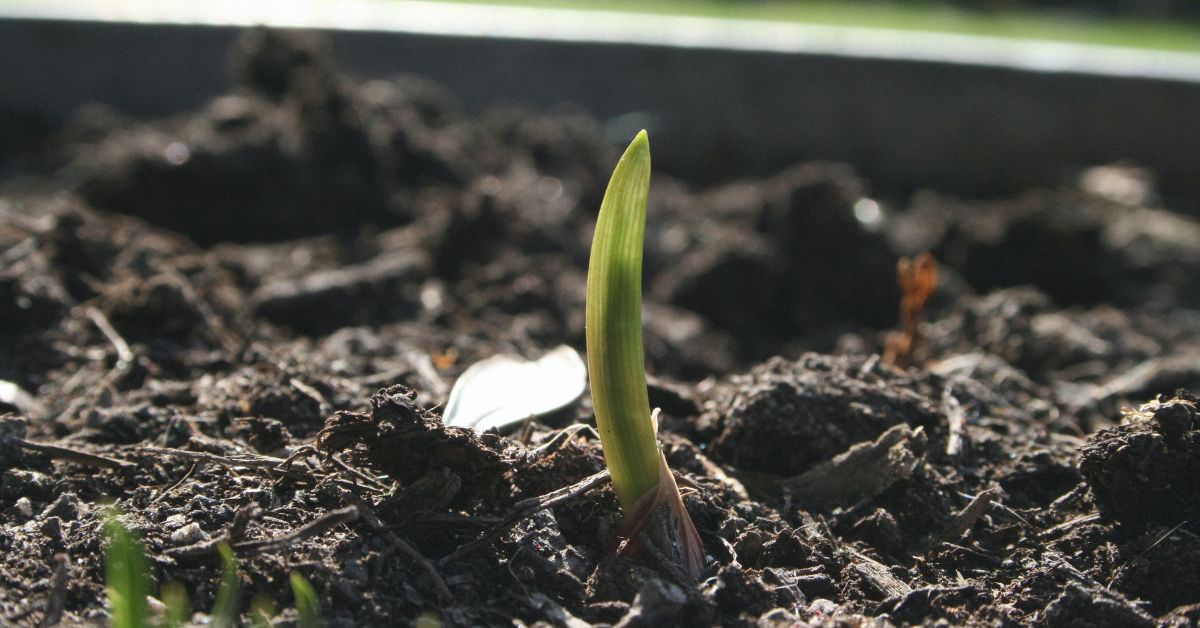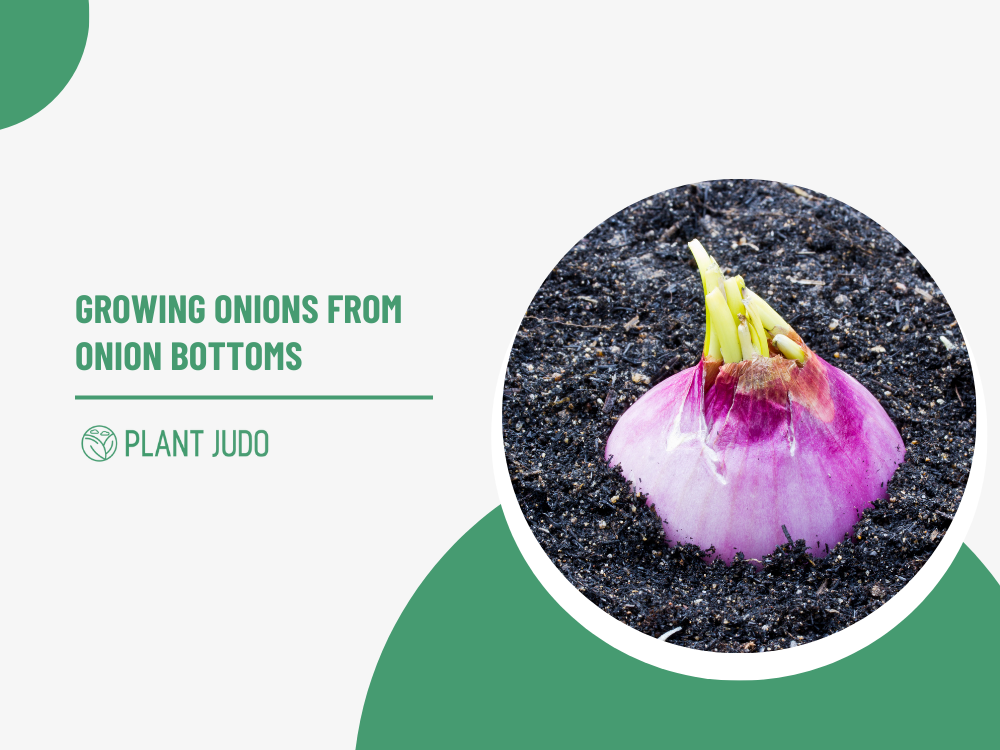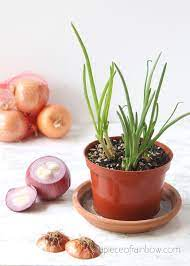Onions
A variety of dishes can be enjoyed with onions, which are as easy to grow as they are tasty to eat. In addition, if you have another onion on hand, you don’t have to start seeds. Onions can be grown from cuttings by chopping off the bottom and planting in soil. A mature onion can be grown in 90-120 days with patience, time, and plenty of water.
A Step-by-Step Guide to Growing Onions From Onion Bottoms
Onion cutting preparation
Slice the onion about 1in (2cm) from the bottom. Put your onion on a cutting board and, using a sharp knife, remove the outer peel and cut off the bottom. A piece of onion needs to be about an inch long to grow a healthy onion.
After drying the onion bottom for 12-24 hours, remove it from the oven. Put the bottom of the onion on a flat, dry surface with the cut side facing up after chopping. Discard the rest of the onion. Up to a day is needed to let the onion bottom become calloused and dry to the touch.
Each onion side should be pierced with a toothpick. Poke a toothpick halfway through each side of your onion bottom, and divide it into four sections. It should look like an “X” when the toothpicks are evenly separated.
The onion should be hung over a bowl of water. A bowl should be filled to the brim with water and placed on a flat surface. Allow the onion to grow for 3-4 days by positioning it, so the bottom just touches the surface of the water. After the roots begin to grow from the bottom, plant the cutting.
Onion Cuttings for Planting
Soil should drain well in a pot. A plant nursery can supply you with a large, well-draining pot and well-draining soil mix. When you plant the onion cutting, you will fill the pot the rest of the way with soil.
The onion cutting should be placed in the soil and the pot filled with soil. The onion cutting should be placed in the center of the soil when it develops white roots from the bottom. Cover the onion with soil until it is 1–2 inches (2.5–5.1 cm) from the top of the pot.
The onion cutting should be watered as soon as it is planted. The onion cutting adapts to its new environment and grows roots faster when watered. When watering your onion, ensure the soil is damp but not soggy.
After watering the soil, spray nitrogen fertilizer on it. Onions love soils that contain a lot of nitrogen. Give your onion the nutrients it requires by spraying nitrogen fertilizer directly into the soil and mixing it with your hands.

Caring for Your Onion
Every week, give your onion about one inch of water. This will keep your onion healthy and ensure that it grows more onions. Keep the soil moist by watering your onion daily if it feels dry.
If you have an outdoor garden, be sure to weed it regularly. With invasive plants, onions struggle to compete, and weeds can steal their nutrients and water. Keep an eye out for weeds in your garden and pull them immediately if you notice any.
The onion should be fertilized every two weeks. Providing your onion plant with regular fertilizer will enable it to grow large, healthy bulbs. Fertilize the onion plant with a nitrogen-rich fertilizer at least twice a month until the onion plant’s bulb emerges from the soil.
Onions should be harvested when they form flowers. The onion is ready for harvest when it starts to bloom. Grab the onion by the base of its green foliage and loosen the soil surrounding it with your shovel.
Conclusion
Here it is! These are the steps on how onion roots grow into onions. Let us know what you think!
FAQs
What is the growth time for sprouted onions?
Just the green parts of the sprouts should emerge from the soil. Keep the soil moist but not soaked by watering the sprouts. It should take 60-80 days for onions to mature. When the bulbs start emerging, you know they’re ready.
How Many Onions Grow From One Bulb?
A single onion bulb will produce one onion. It is a miniature version of a giant onion grown the previous season that is planted when onion bulbs are planted. Eventually, the small onion bulb becomes a mature onion.
Planting onion results in what?
As the onion uses stored energy to try to make one last go at life, the outside will become papery and dry, and the whole onion will shrink. There is nothing wrong with eating an onion after it has sprouted. It’s still acceptable to cut it up for dinner as long as it’s not spoiling or moldy.



